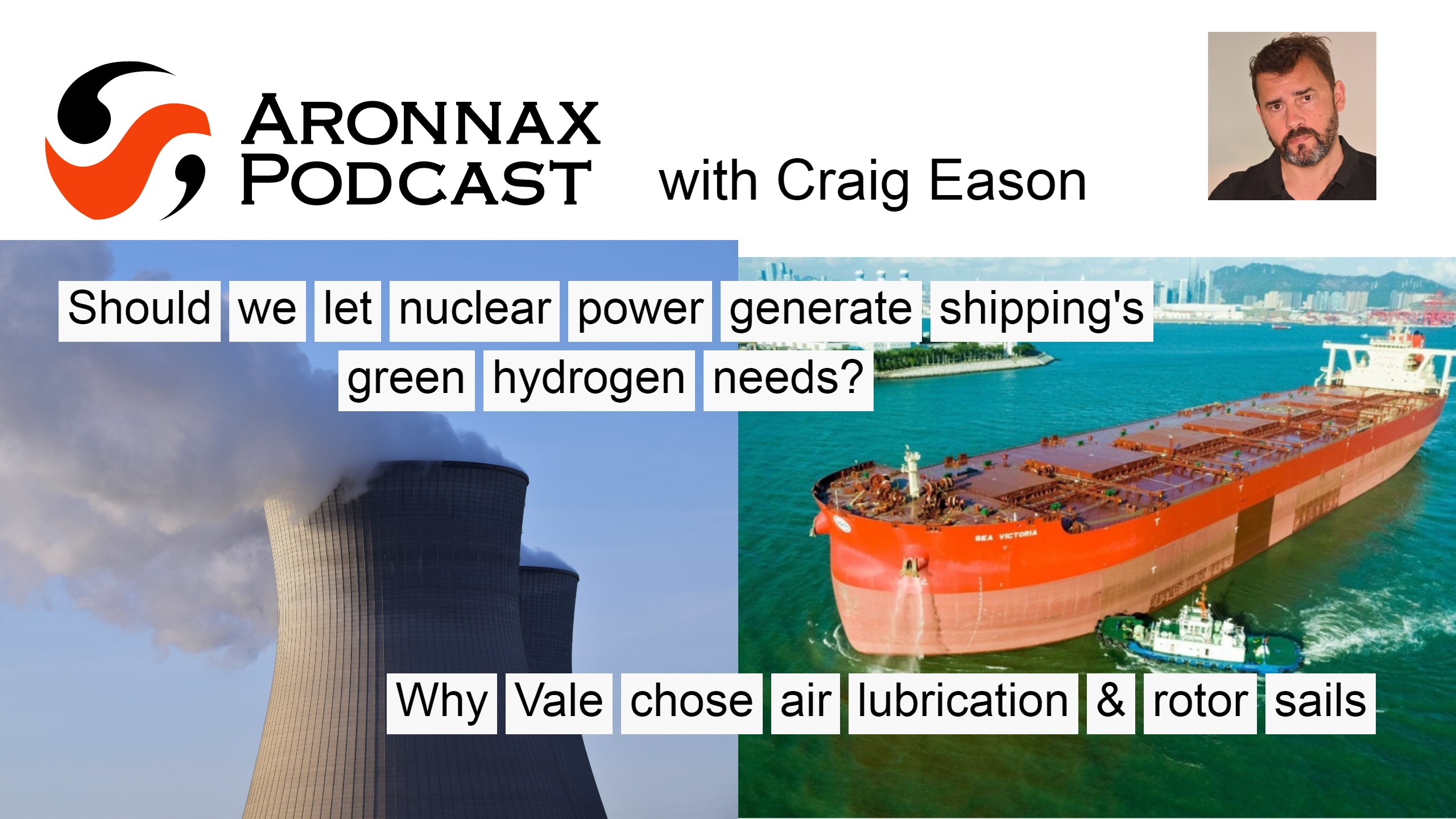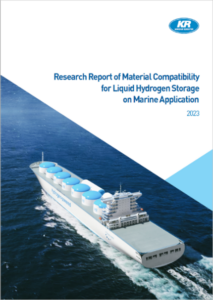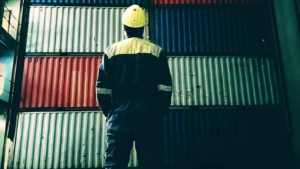IN this episode I look at the proposal that suggests hydrogen and ammonia fuels for shipping could be readily made using nuclear power derived electricity. The Clean Air Task Force says many nuclear power plants have capacity and there are projects to install electrolysis units at power stations to generate hydrogen. Shipping is a good industry to use this power.
Also int he episode we hear from Vale shipping manager Rodrigo Bermhelo about the mining giant’s eco-shipping project where it has begin to install air lubrication and rotor sail systems on its giant ore carriers.
Show transcript
SPEAKERS
Brett Rampal/CATF, Noah Silberschmidt/Silverstream, Craig Eason, Rodrigo Bermelho/Vale
Rodrigo Bermelho/Vale
The fuels that we are studying like methanol and ammonia for these vessels that are already have the space we can achieve close to 80% emissions reduction on existing ships. So we believe that we have an important competitive advantage to reduce emissions on existing ships. I think this is an important goal that we have.
Brett Rampal/CATF
As one of the world’s largest sources of clean, firm energy. Nuclear energy offers this really, really useful base load – always on sort of electricity – that when paired with electrolysis, really turns production into a more similar sort of production to existing field production.
Craig Eason
Hello, again, this is the Aronnax podcast, a show that focuses on the development and transformation of the maritime and ocean space. I’m Craig Eason. And if you don’t know me, I’m a former seafarer from what seems a long time ago, who became a journalist, writer, editor, and now podcast host. On this podcast, we’ve covered a number of technologies and ideas as well as policies and projects that are focused on the decarbonisation of the shipping industry. Shipping the backbone of global trade is needed to give us the things that we want at a price we expect. But while it’s a vital component of how we live our lives, it like other industries and parts of societies is under a lot of pressure to decarbonize Now decarbonisation and shipping is taking two distinct steps, the first phase is focused on doing something with the existing ships. And then there’s the phase looking more perhaps at the new ships, the newbuilds. Some of these existing ships are large, very large and quite young, meaning that there’ll be sailing the oceans for many years, and at the moment, they nearly all burn diesel fuel. And this, of course, pumps out CO2 into the atmosphere. There are a number of technologies being rolled out to help reduce this. And there’s wind assist propulsion, and I’ve covered this extensively in earlier episodes of the ironic show, and I’ll put a link in the show notes to some of them. But then there’s other technologies to help ships get routed more efficiently. Some to say that more optimum speeds and understand when hulls need cleaning, and then there’s technologies that push air bubbles under the hull. Air bubbles under the hollow air lubrication as it’s known, has been developing for a number of years and as the name suggests, a layer of small air bubbles are continually pushed under the hole to glide between Hull and water, thus reducing the friction force that the ship and its engines need to overcome to sail forward. less friction means less power needed on an engine and therefore less fuel and fewer emissions from the funnel. Now in Brazil, one of the world’s largest mining giants, Vale, is also one of the largest charters have large drive bulk tonnage. There are huge dry bulk vessels and Vale controls a lot of them and this is not only leads to significant fuel use but also significant emissions. The company now has an ecoshipping programme, as it called it and it’s taken two extraordinary steps this year, said to rotor sales on one of the ships and their lubrication systems on another. Both vessels are now trialling the systems with Vale considering rolling them out to other vessels on their fleet that they charter. These two ships are the biggest yet to have either of these systems but also demonstrates how charters are influencing the shape of shipping. Rodrigo Bermelho is Vale’s shipping technical manager. So I spoke to him and to Noah Silberschmidy, Silverstream Technologies, which has installed the lubrication system on the Sea Victoria about the installation and trial. But I started by asking Rodrigo about the Brazilian giant’s Ecoshipping programme, what that entails.
Rodrigo Bermelho/Vale
About four years ago, we have established within Vale this R&D programme that we call eco shipping. It is a programme to position Vale in relation to the IMO ambitions and the Paris Agreements and Vale on sustainable targets that we have. And we think Ecoshipping we have drafted a clear low carbon pathway and this low carbon pathway starts with energy efficiency. We believe there is – actually we have a first wave with invalid vessels that the economy of scale we have very large vessels and they have captured important gains, and we believe the second wave is related to energy efficiency and this wave is not finished, there are a lot of energy efficiency gains to be captured. And these energy efficiency gains they will allow us to reduce the demand for fuel and then make a transition to alternative fuels low carbon fuel. So it’s a very important step that we have- these energy efficiency gains. And based on that we have scanned, the markets and the innovation technologies that are under development to see what are the energy efficient technologies that can deliver higher against. And here we matched the air lubrication technology. I think there are few technologies today. There are many, many, many technologies related to energy efficiency, but not all of them deliver high gains. And these are important ones that we must capture. So once we had identified air lubrication as one potential technology, we reviewed the technology because there are different ways to do air lubrication. And we match them with Silverstream – we have a specific way to do that, and one that has a lot of data that were provided to us. And we’re able to evaluate that initial stage the technology, and then starts our innovation journey. And we did a lot of engineering that- It is two years that we have been working closely together with Silverstream. Once we have identify them as potential makers for these solutions. We did a numerical analysis, various numerical analysis, we went to HSVA model basing in Germany, we have test in scale. First, we have test the release the units in full scale in their cavitation tank, and then we have tests, in scale model, the full vessel, with our lubrication devices, to have more precise information about the gains that were available. And once we got that information, and we confirm his idea that was a technology with high gains on energy efficiency, then we moved to the pilot stage. And while all the fabrication of the equipment and studying on the vessel, that’s the stage we are today,
Craig Eason
How would you look at the companies that you you chose? There’s a lot of companies, a lot of engineers, there’s a lot of startups, there’s a lot of businesses that are clamouring for the attention of ship operators, managers, companies, like yours aren’t there. And I’m sure if you gave everybody your business card, there’ll be knocking on your door as soon as possible to say, hey, I’ve got the answer for all of your problems. Here’s my silver bullet idea. What kind of advice would you give to companies that have got ideas and solutions? What kind of advice have you got for them, before they even come knocking on your door?
Rodrigo Bermelho/Vale
My advice would be be prepared to partner and share information. I think this is one thing that we got from Silverstream from the very beginning, they have partnered with us and they have incentivized that we go through all this process – numerical analysis and test – to validate the technicals- It is very difficult to deal with any maker if we are not able to validate their claims. And when we talk about innovation, we must acknowledge that sometimes we are talking about new theories or new ways of testing and there is some scope for it to be done that. So it’s important that they realise that there is a pathway there is a journey together to validate the claims so that we can finally move to the real thing.
Craig Eason
So this vessel, Sea Victoria, has now arrived in Brazil, it’s left I presume it’s recently left the dock where it had the system, retrofitted. It had the tests done, it’s now sailed. It’s sailed. Presumably as it sails towards Brazil. It sailed in ballast, but you’ve able to test the system in ballast is it went west. Can you tell me a little bit about how those tests went and also about the responsibilities and role of the crew on board when you’ve got a novel technology like that?
Rodrigo Bermelho/Vale
Yes, this is the first leg the first voyage the system is working. But we we think it’s very premature to have any results. I think we are adjusting the system and we are trying to reach the maximum performance that we aim. I think we did a very detailed work before installing and we have solid numbers and now we have to take time to validate that we have assigned Lloyd’s Register for our one year long term. Perfect assessments We have installed high frequency data collectors, sensors, and we’ll have a lot of information to process within this one year of operation to to finally confirm and even exceed the expectations that we have with this savings. So, I would say that for the moment, we are very satisfied and we continue to work because innovation is just beginning. There is a long way in terms of the the work crews has to do, indeed, dealing with new technologies that are challenged and, of course, new process to be performed on board. One thing that we did that’s I also recommend to everyone that’s in doing new technologies to perform hazard identifications workshops, we did hazid/hazop workshops involving classification societies, the makers – Silverstream, the shipyard, ship designers ship operators, P&I Club, we brought everybody around the table we have, we were, honest enough to points all the new things and the possible problems that could arise from this operation, and try to identify actions to solve that or to manage the new process. So all this is a is a list there is a shared responsibility, among all parts, which one had to do the actions. And now this is also in cost of implementation and test and reviewing.
Craig Eason
Let me turn to Noah now because no, I’ve known you for a number of years now I’ve seen how silverstream has grown and developed since it concept I was talking to you. At the time, just before you had the first system installed on the Amelienborg. How many systems have you not got onboard vessels or contracted on board vessels?
Noah Silberschmidt/Silverstream
as of today, we have 59, we provide a solution, both to newbuilds, and we’re the only one that’s doing retrofit solutions. The retrofit solutions are extremely important with new regulation on CII and EEXI. And we are at silverstream very focused in providing a product to help the industry, help owners that otherwise would have stranded assets, and try and make make them able to and have them give them a licence to to basically sail after 2023 regulatory environment. So it’s a very important part of our strategy to do so. And we’re scaling up part of Silverstein’s business, just to do retrofits fleet deals. And that is, of course, something we’re looking to do with all our…..currently, I think we only really have tier one owners, if you look Vale, Carnival, Shell and so on so forth. But it’s something we are looking to be able to service the whole industry, whether them being,whatever you how want to grade them in tears. But we’re also working with new builds, designers, new build teams, new build programmes and that’s another way for Silverstream to be able to, let’s say affect the market more. So yes, recently. I mean, three years ago, we did a fleet deal with Grimaldi which was 12 vessels. And then most recently, we did a fleet deal for Shell last year on a number of LNG vessels, which you can see on the website, which has got a lot of potential options attached to it. And then we have just now been involved in a lot more activities in 2021, which has not yet published.
Craig Eason
is the installing a cyst retrofitting a system is Is that likely to be a lengthy process, with each installation needing to be bespoke for this particular vessel designed around the vessel the number of air compressors that need to be installed on board, the positioning of where the air bubbles flow out from under that under the hull? Have you looked at how you can actually shorten that period of design and installation of a system?
Noah Silberschmidt/Silverstream
One of the workstreams we’re currently doing at Silverstream is that we have a whole standardisation programme. So that means that we are working now with a fixed set of compressor types and standard systems. So if you tell me that you have a certain vessel, we are able to respond very quickly on single retrofit installation, we can will six month notice instal that, clearly, we would like to have a bit more time available to us, so we can resource it properly. But we are we are now ready for a client if the client is coming to us today and wants to do 40 retrofits over a period of five years. That is something we are currently set up to do.
Craig Eason
when it comes to insurance of new technologies. As with with 50 installations, and no incidents, there’s a there’s a certain pedigree that you’re building building up here, but always the installation of new systems onto ships .and perhaps I could take this question to Rodrigo, about putting a new system onto his ship. When you go to your insurance company. They’re going to look at you and think, okay, what’s the additional risk here? Could you tell me a little bit about any conversations you had with the insurance companies, to explain to them what it was you were doing and what it entails?
Rodrigo Bermelho/Vale
Yes, for Craig, yes, we have involved with P&I Club from the very beginning. And of course, we have covered the new technology and have ensured some aspects of this new technology on boards. Now our coverage. And as I have mentioned, we also brought the P&I Club to discuss together with the other stakeholders, potential risks that were in the project. So they were around the table when we did the hazid workshops. And I think that was a great partnership that we had with the steamship P&I Club. They were very competitive, they brought good insights. And I think this is building also a relationship that’s needed cooperation that’s needed when we talk about new technology and innovation.
Craig Eason
And you’ve said that there’s the potential for the systems that you’re installing now, the air lubrication and the and the the rotorsail system for them to be installed on the ships as well. Have you Have you discussed that further? Have you got a timeline for when that might start to happen?
Rodrigo Bermelho/Vale
Yes, as I have mentioned, we have this low carbon pathway for shipping. Energy Efficiency plays an important role to demand the fuel consumption. Maybe you are aware, we have a lot of very large ore carriers that were designed as LNG ready. So 77 of these vessels were designed and built for future retrofits of LNG systems, so they have compartments dedicated compartment for LNG fuel tank for a round voyage and within our programme, we are working to develop other fuels for this space to turn into a multi-fuel compartment. So we have a project for a multi-fuel tank. One tank that could store ammonia, methanol, LNG. This is an important piece of our strategy, and the technologies – here the lubrication and also the rotorsails- they were designed it on these vessels- very large ore carriers. We have selected one Guiava-Max – that’s 325,000 dwt. There are 47 vessels of this class, and 60+ vessels, the Vale-max class 4000, 000 dwt. These technologies they way we have designed them it’s very easy to escalate the system here to all the vessels we are talking about. But it’s a question at first to to validate the results, so we will go through these one year assessment to validate and refine the solution. Of course we have expectations to exceed the results that we have and I believe that the technology will improve and we can in the future have better gains, so, the pilot is for that as well. And once we we are comfortable with these gains that we can have, they will allow us to go for a more comprehensive solution on installing energy efficiency equipments on vessels, reducing the demand for fuel and going to alternative fuel solutions and fuel that we are studying like methanol ammonia for these vessels that are already have the space we can achieve close to 80% emissions reduction on existing ships. So we believe that we have an important competitive advantage to reduce emissions on existing ships. I think this is an important goal that we have.
Craig Eason
That was Rodrigo them Hello from the Brazilian mining giant valet talking to me about the company’s plans to reduce the emissions on the giant bulk carriers its uses and some other technologies that they’re using to achieve it. And in terms of future fields, I was particularly interested in the idea of a multi fuel tank which can be used on board for different fuel types. As shipping moves into its next era. When fuels like methanol, hydrogen, ammonia, and biofuels will rise. The discussion about future fuels is a heated one, and there are proponents shouting louder and louder about specific solutions. On a personal note, I don’t see why one fuel should win over the other just yet. different markets in different regions may have different answers, but one thing is for sure, there’s going to be a need for more of it to be made. If we assume that part of the shipping industry will require green hydrogen and green ammonia, which is made from the hydrogen then industry needs to look at how the electricity is sourced. The most talked about sources are green electricity from wind power or solar power, possibly wave and tidal in the future to then there’s the debate about the value of blue hydrogen and whether this is the transition to green. Blue hydrogen is where the hydrogen is made through Steam reformation, and the co2 generated is recycled or stored through CCS. But a recent paper in the US has pointed to another source of electricity to make hydrogen nuclear power. In the US lobby group, the Clean Air Task Force issued a paper last month suggesting that as nuclear power generates baseload electricity, it’s an obvious source of power to make hydrogen for society. nuclear power stations already use significant amounts of hydrogen in their chemistry and water cooling. But this is currently sourced through the steam reclamation process of natural gas. There are now trials in the US and proposals in the UK to develop hydrogen from nuclear power and use it specifically in hard to abate industries such as shipping. The Clean Air Task Force paper was authored by its nuclear power expert, Brett rempel, I got in touch with him and I asked him about the nuclear industry in the US and its existing use of hydrogen. This is set to change. And the first demonstration projects
Brett Rampal/CATF
the reactors nuclear power plants around the world that use hydrogen in their operations are usually sourcing that steam methane and refined hydrogen in their in their operations. Right now, in the US, we have multiple demonstrations for demonstrations and nouns, the one with the location, as you know, just recently been confirmed by Exelon of nuclear hydrogen electrolysis demonstrations supported by utilities in the Department of Energy. The Exelon demonstration is going to be at the Nine Mile point, nuclear reactor, nuclear power plant, excuse me. And the existing power plants use the hydrogen in chemistry control and their water in some reactors. And in others, they use them to cool the generators. So keep the generators cool. So that that is a not an insignificant amount of hydrogen being used by the existing reactor fleet around this country. And so that’s why a lot of these utilities and the Department of Energy is looking at the opportunities for sort of pairing the existing user which is also a clean energy generation source to produce the commodity that it’s using. And the paper also alludes to a more advanced sort of electrolysis technology that’s currently being studied and researched and even demo in some places. And there’s high temperature steam electrolysis technology also tends to lend itself very well to nuclear technologies with which can offer a high temperature steam product at the end of its energy or in its energy generation cycle.
Craig Eason
What what’s the benefit of building an electrolysis subunit to a nuclear power station compared to building it close to a wind power station or a solar panel? what’s the what’s the benefit of the hydrogen in this discussion compared to solar or wind generated electricity?
Brett Rampal/CATF
Sure, well, I mean, depending on your region in your area, the option for pairing electrolysis with renewables might be, you know, the best option for you but for some reason There’s some areas that just might not be possible for a area and density sort of need renewables while a great and growing source of our electricity in this in you know, in this global economy they tend to be relatively dispersed not take up a little bit a lot of land use the opportunities for nations or locations that are very reliant on marine shipping, such as Pacific island nations or you know, that all have land use me are problems land density problems, would probably struggle to produce or build out the needed renewable infrastructure to support decarbonizing both their electricity and expanding to produce additional zero carbon fuel sources. So from that standpoint, it offers a different side of the the teeter totter on renewables there. And then additionally, as as one of our the world’s largest sources of clean, firm energy. Nuclear Energy offers this really, really useful base load always on sort of electricity that can, when paired with electrolysis, really turns production into a more similar sort of production to existing fuel production. Most fuel refineries and fuel production operations work most economically and efficiently when they’re producing fuel, not when they’re not producing fuel. So pairing electrolysis technology with an always available clean source of energy or electricity, helps support overall economic production of the zero carbon fuels.
Craig Eason
And in terms of the the location of nuclear power stations there may have this role, but most of them seem to be located next, next, or very close to water, large water sources because the amount of cooling water that they need, so they tend to be next to water, but I don’t perceive them as being very close to ports. That question Can at that point leads to the if you if you can get the hydrogen electrolysis located next to the nuclear power station. So you’ve got that you’re What about that link between the hydrogen that has been generated or ammonia or whatever product it is, and the actual end user?
Brett Rampal/CATF
Sure. Well, you know, in the United States, we do have some existing nuclear power plants that you know, are not located directly next to ports, but are located nearby and the existing us pipeline infrastructure is extremely robust. And the opportunities for either hydrogen blending or hydrogen injection directly into dedicated pipelines for shipment and production, or are transitioning existing pipelines over to new operations with retrofit and upgrade, of course, those sort of opportunities, lend itself well for a gas commodity like hydrogen or ammonia. And when you’re also talking about the next step, which our paper talks about, in terms of using ammonia instead of hydrogen, there is an existing ammonia transportation and production, market and infrastructure globally around the world. So the the distance from a quote unquote, large traditional port might not be super challenging for an existing nuclear power plant that might be located on the Gulf of Mexico or along the Mississippi River, if they could leverage existing transportation infrastructure for one of these, you know, technology for one of these commodity streams.
Craig Eason
The obvious question is really, why not just put the nuclear power station or the nuclear power unit directly onto the ships, the in the US there was the Savannah and the Russians have got a large number of icebreakers in in service for many, many years. And of course, they had one deep one large container vessel kind of icebreaking container vessel that was is still nuclear power, I believe it’s still actually in service. And then of course, there’s all the military vessels both in the US and Russia and elsewhere that have got nuclear power plants on board, some of them have gone to nuclear power plants, I believe. And I know that this is a discussion that has also risen again, in maritime circles about the option of putting some of the developing technologies for nuclear power onto ships and star and using that as a way to demonstrate cleaner shipping, that you see that different from what you’re suggesting. In terms of creating ammonia and hydrogen for the shipping industry.
Brett Rampal/CATF
Sure. And just as an aside an anecdote the USS Enterprise, the Nimitz class carrier that came out actually had eight nuclear reactors on it, I believe. So some of these, some of these aircraft carriers have that multiple reactors on them. A lot of my original thinking began going down the pathway of putting reactors on ships, but when we sort of looked at the balances and the pros and cons and again, the timescales for decarbonisation, you know, and where existing, you know, nuclear technology is used or could be used now, we don’t see a world where long durations transportation shipping becomes ultra reliant on, at least in the near term, on on a on nuclear propulsion on the ships, because, number one, there’s ports around the world that are, are non nuclear areas and won’t allow nuclear vessels and everything. So therefore, you limit your, your, your access, right there. Number two, there’s liability issues for operating a nuclear reactor on a ship versus operating a traditional or zero carbon fuel engine on a ship. You know, those liability issues can include security and proliferation, as well as extreme cost liability issues. And then you’ve also got a workforce and manpower concerns. So the the the challenges with looking at the existing marine shipping fleet and talking about a large scale transition of all of its, or a majority or a large percentage of its workers to be nuclear qualified or to work on a ship with new versus what they’re used to, which is they’re very well experienced professionals in fuel operations and, and safe operations of marine engines. Those are high higher barriers than we thought in the near term for looking at an option like a zero carbon particle, which is an easier transition, it seems. And then in the paper, we discussed, like you discussed icebreakers, a couple other niches where we think nuclear propulsion will continue to expand and shipping like research vessels and sort of those niche opportunities that in the near term, really what lends itself well to this before the larger picture. It just seems like a larger lift right now,
Craig Eason
finally, I’m aware that’s back in the 60s, late 60s, early 70s. In the US, the military or one of the the engineering course, or something like that, put a nuclear power station on an old vessel and created a barge didn’t power the vessel by him. But it was used in the Panama Canal. Russia has got its floating power station that’s now active up in the in the Arctic, China has got a nuclear barge that is developing should be floating sometime this year, maybe or operational next year. And I know that there’s a couple of companies that are looking at nuclear power on a barge so that the nuclear power itself becomes mobile. Do you see this as being able to work alongside that hydrogen generation, then as part of this process to create a much more flexible green fuel supply chain for the shipping industry?
Brett Rampal/CATF
I think we see novel and deployment and novel deployment methods as being important and integral to the growth and future deployment or achieving potential of nuclear decarbonizing or supporting large scale grid, decarbonisation or large scale energy systems, decarbonisation the the mobility aspect of putting them on the barges In my opinion, I don’t necessarily think is the biggest driver for why they’re doing that. I think it’s more a sighting issue, if you can, you know, site the reactor offshore, it’s a little bit easier in a lot of cases than siting it offshore. As you can imagine, based on experience that a lot of industries have learned for offshore versus on onshore siting in similar energy production technologies. So the and if you look at what a lot of these barges did or are doing, they’re being moved someplace and left there for a long time. So the Sturgis the Panama Canal barge, stay there. Forever the academic Lavasa, I’m sorry, I probably butchered the Russian name of that is in a northern port located there for a long time. And I believe that’s what the Chinese are planning to do. So I think it’s leveraging existing shipyard building capabilities to kind of say, Oh, hey, how can we commoditize these products better? How can we increase the manufactured content? How can we assembly line these things out, and then we can use the waterways to then transport them, and then they have implantation there. So I think that does lend itself very well to the potential options for doing zero carbon fuels, because then you could, as you, you know, alluded to before and get them closer to those ports, or locations where the users are going to be.
Craig Eason
That’s Breck rampolla from the Clean Air taskforce talking about the idea of generating hydrogen and ammonia from nuclear power, and using it in the shipping industry, as well as the growing interest in nuclear power stations on a barge. Of course, there is the other option of having nuclear reactors as a power source on a ship. And while this still faces a lot of challenges, not least political and societal. There are companies looking at this possibility of UK has now issued a consultation for a draft merchant chip regulation that would align itself with the iremos nuclear code for nuclear ships. Well, that’s it for this episode of the air annex podcast. I’m Craig Eason, you’ll find me at fathom dot world where you can read our stories on these and other topics, please visit the site and subscribe to our newsletter. And of course, subscribe to this podcast on your favourite podcast app. And share this podcast with your friends, family and colleagues who are interested in the transition and transformation of the shipping and ocean space. Until the next time, goodbye.
related news
More aronnax episodes


Aronnax: July 3rd
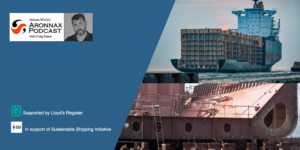
Aronnax: June 29th – Ships and their steel: Turning it green
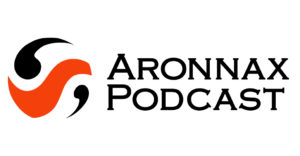
Aronnax: June 19th

Aronnax: June 4th
























